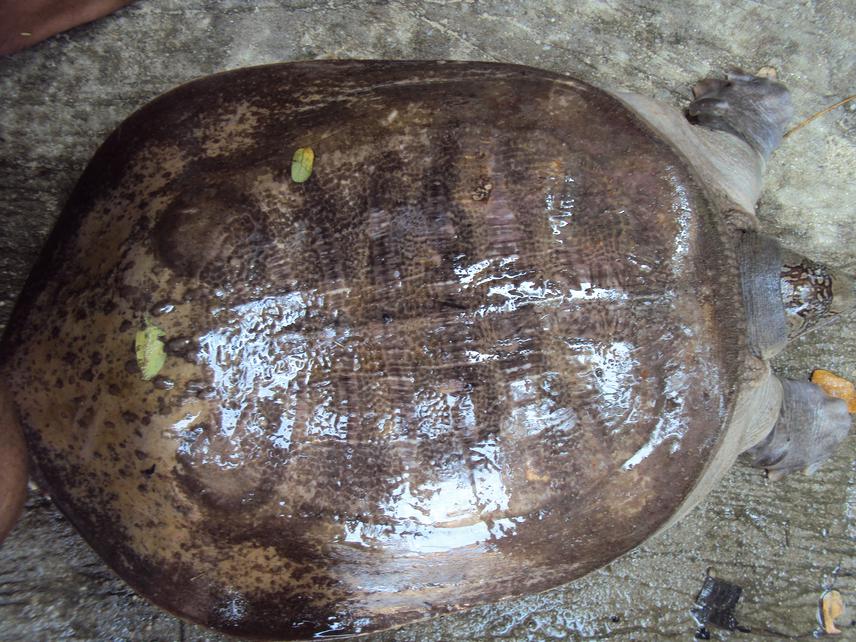Asmit Subba
The Indian Peacock soft-shell turtle (Nilssonia hurum) is currently listed as an endangered species on the IUCN Red List and also classified as an EDGE (Evolutionarily Distinct and Globally Endangered) species. Over the past three generations, there has been a significant overall reduction of 50% in their population. The decline of this species is primarily attributed to various serious threats within its range, including habitat encroachment, unmanaged water management systems, overfishing, poisoning of water resources, industrial discharges, domestic wastages, plastics, over-angling, and the use of fixed nets. These factors have led to a decline in the freshwater turtle population.

Nilssonia hurum in eastern Nepal. © Milan Kharel.
A preliminary survey has identified a number of threats to the existing population, including habitat destruction, electric fishing, water poisoning, sand mining, entanglement in fishing nets, and consumption for ethno-medical purposes in the study area. To address these issues, we will gather more information using methodology involving temporal replicates, presence/absence data, and associated variables (seasons, habitat types, and threats such as electrofishing, poisoning, sand mining, habitat modification, water pollution levels, and direct killing using hooks, traps, and nets) in the Kankai River floodplains. Structured questionnaires will be conducted with local and ethnic communities to generate information on occasional hunting behaviours, drivers, and related details. Furthermore, awareness campaigns and workshops will be organized for local fishers, students, and other stakeholders.
The analysed data will help to identify the distribution patterns of the species, their associated threats, and the perception of locals of the study area. As per our activities and timescale, the raw analysis results will be shared with local communities, local government, and stakeholders through discussion groups, and workshops. The generated information from the surveys will be used to develop conservation materials that will emphasize evidence-based conservation practices.